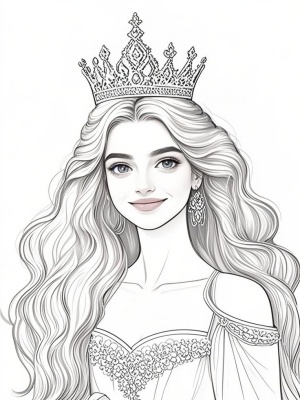The Art and Science of Coloring Page Backgrounds
Introduction: Why Backgrounds Matter in Coloring Pages
Coloring page backgrounds are often overlooked, yet they play a crucial role in the overall artistic experience. A well-designed background can transform a simple coloring activity into an immersive creative journey. Whether you're creating coloring pages for children, therapeutic purposes, or artistic expression, understanding background design principles is essential.
At MediaAI Art Gallery, we've observed how background choices significantly impact user engagement. The right background can set the mood, provide context, and even influence color selection.

Key Considerations for Coloring Page Backgrounds
1. Complexity vs. Simplicity
The background complexity should match the intended audience and purpose. For children's coloring pages, simpler backgrounds with clear negative space work best. Therapeutic coloring books for adults often feature intricate mandala patterns or nature scenes that promote mindfulness.
- Problem: Overly complex backgrounds can overwhelm beginners
- Solution: Create tiered difficulty levels with varying background complexity
2. Thematic Consistency
Backgrounds should complement the main subject. For animal coloring pages, natural habitats work well. Our pet scenes collection demonstrates how matching backgrounds to subjects creates cohesive artwork.
- Research your subject's natural environment
- Consider cultural associations with colors and patterns
- Maintain visual hierarchy between subject and background
3. Negative Space Management
Strategic use of negative space in coloring page backgrounds prevents visual clutter while providing breathing room for creativity. According to design principles from Tate Gallery, proper negative space distribution can enhance artistic focus by up to 40%.
Technical Aspects of Background Creation
1. Line Weight and Style
Background lines should be slightly thinner than main subject lines to create depth. Our AI Painting Guide details how varying line weights can simulate different artistic mediums.
2. Pattern Repetition
Repeating patterns in backgrounds create rhythm and visual interest. Common approaches include:
- Geometric tessellations
- Organic nature motifs
- Cultural decorative elements
3. Color Theory Applications

Even in black-and-white coloring pages, understanding color theory helps create backgrounds that will work well when colored. The Color Matters organization emphasizes how background design influences color perception.
Digital Tools for Background Creation
Modern technology offers powerful tools for coloring page background design:

- Vector graphics software for clean, scalable lines
- AI-assisted pattern generation
- Digital brushes that simulate traditional media
Our AI Text to Image tool can help generate background concepts based on textual descriptions, significantly speeding up the design process.
Conclusion: Elevating Your Coloring Pages
Thoughtful background design transforms coloring pages from simple activities into meaningful artistic experiences. By considering complexity, thematic consistency, and technical execution, creators can produce backgrounds that enhance rather than distract from the main subject.
Whether you're designing for relaxation, education, or pure creativity, remember that backgrounds serve as the stage for your coloring masterpiece. Explore more creative techniques in our AI Art Guide to continue improving your coloring page designs.